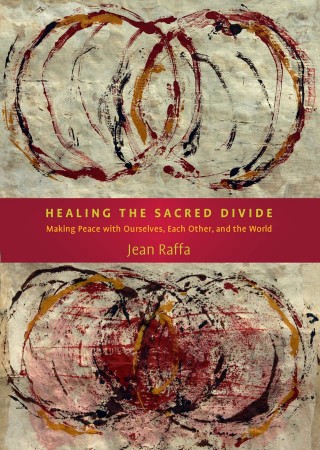 The following is the transcript of an interview I had yesterday with Teresa Oster, MS, MSW. She’s a board member of The Center for Jungian Studies of South Florida where I’ll be doing a presentation on February 23. This is their link: www.jungfl.org. I’d love to see you there!
The following is the transcript of an interview I had yesterday with Teresa Oster, MS, MSW. She’s a board member of The Center for Jungian Studies of South Florida where I’ll be doing a presentation on February 23. This is their link: www.jungfl.org. I’d love to see you there!
Q. Healing the Sacred Divide: Making Peace with Ourselves, Each Other and the World, which took you 18 years to write, is compelling reading, weaving the insights of many — spiritual masters, Jungian analysts, psychologists, and others — with your own. As a warm-up question, might you describe your personal library? How many books? How are they organized? What is on your reading table or night table now?
A. Oh, my. In our home we have a designated library/music/reading room with two walls of shelves containing about 1,650 books. At the moment there are another 200 plus on or near my desk for quick access. Most of the other rooms have a shelf or two of books as well. Those in the library are clustered together in genres: classics, children’s literature, art, fiction, poetry, dreamwork, philosophy, archetypal symbolism, religion/spirituality, mythology, psychology, and women’s issues. Those nearest my writing desk belong to the last five genres.
The books on my night table at the moment are: The Hidden Spirituality of Men, by Matthew Fox; The Physics of Angels, Matthew Fox and Rupert Sheldrake; Man and Time: Papers from the Eranos Yearbooks, Volume 3, edited by Joseph Campbell;The Wisdom of Sundays, Oprah Winfrey; Philosophy: An Illustrated History of Thought, by Tom Jackson; and Hilma af Klint: Paintings for the Future, by Tracey Bashkoff of the Guggenheim Museum. A friend loaned the last one to me last night. It’s filled with extraordinary archetypal images.
Q. Would it be accurate to call Healing the Sacred Divide a spiritual autobiography and workbook as well as a discourse on the trials and treasures in healing our divided selves, our divided relationships, our divided world?
A. Yes. That’s a perfect summation. I find it almost impossible to separate my thinking and learning from my personal life and my passion for sharing what I’m learning with other psychological and spiritual seekers. I want to become my fullest Self and I love mentoring others who are on the same path.
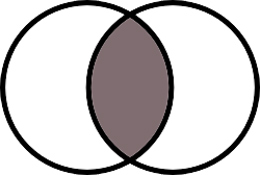 Q. The late Jungian Analyst Robert Johnson wrote the forward to your previous book, Dream Theatres of the Soul. He appears to be a touchstone for your work. Would you comment on him, and his passing, and his favored concept of the mandorla, which you emphasize in Healing the Sacred Divide?
Q. The late Jungian Analyst Robert Johnson wrote the forward to your previous book, Dream Theatres of the Soul. He appears to be a touchstone for your work. Would you comment on him, and his passing, and his favored concept of the mandorla, which you emphasize in Healing the Sacred Divide?
A. Robert A. Johnson was my earliest Jungian mentor. I met him at a Journey Into Wholeness conference in the early 1990’s and immediately knew him to be a soul brother. From him I learned that myths and dreams are valuable stories that show me the archetypal forces in my unconscious. I also learned that my psychological and spiritual growth is dependent on my ability to reconcile the conflicts in myself and my relationships. This is symbolized by a mandorla — the third, almond-shaped space made by two overlapping circles. It represents the holy space of dialogue and understanding where we connect with the Self and resolve conflicts in creative new ways. I’m sad that he’s no longer with us, but his soul left a powerful imprint on mine that will always be with me.
Q.You begin the book with a nightmare you had when you were ten, of the Lone Ranger, who you so admired but who shot you in the dream. The Lone Ranger has ‘shadowed’ you for all these years. Could you say just a bit about the importance of him in your process? I recently saw the archetypally rich film The Lone Ranger, starring Johnny Depp as Tonto. Have you seen it? If so did it resonate?
 A. My dream was as archetypally rich as the film. I did see it and I loved it. As a child, I idolized the Lone Ranger, Tonto, and Silver. I woke up from that dream screaming with outrage and weeping from a profound sense of betrayal. It has taken me years of inner work to understand why. The Lone Ranger was my version of the heroic Father archetype. Tonto was my personal image of my shamanistic Mediatrix/Sage archetype. Silver represented the power and potential of my Animus, the drive that motivates my teaching and writing. Why did the Lone Ranger shoot me at the age of ten? Because I was becoming aware of the toxic patriarchal conditioning of my childhood that said males were heroes and authority figures and females were victims and second-class citizens. The dream was a call to discover and empower the archetypal forces in myself, especially my feminine side. It took me 35 more years to find the path Jung paved for me and other seekers.
A. My dream was as archetypally rich as the film. I did see it and I loved it. As a child, I idolized the Lone Ranger, Tonto, and Silver. I woke up from that dream screaming with outrage and weeping from a profound sense of betrayal. It has taken me years of inner work to understand why. The Lone Ranger was my version of the heroic Father archetype. Tonto was my personal image of my shamanistic Mediatrix/Sage archetype. Silver represented the power and potential of my Animus, the drive that motivates my teaching and writing. Why did the Lone Ranger shoot me at the age of ten? Because I was becoming aware of the toxic patriarchal conditioning of my childhood that said males were heroes and authority figures and females were victims and second-class citizens. The dream was a call to discover and empower the archetypal forces in myself, especially my feminine side. It took me 35 more years to find the path Jung paved for me and other seekers.
Q. You quote Krishnamurti: “The world problem is the individual problem.” Would you comment? How are we individuals responsible for the extreme conflicts in our world today?
A.The opposite of Krishnamurti’s comment is likewise true: the individual solution is the world solution. We and our species are evolving from a state of primitive infancy toward greater consciousness and psycho-spiritual maturity. As you do your inner work and grow in self-awareness, you automatically motivate everyone you touch to seek healthier resolutions to their problems and find meaning for their own lives. For the first time in human history, the internet has the potential to swing the tide of collective consciousness away from conflict and hatred toward understanding and love. I truly believe that if we join the drops of our individual awareness to the gathering collective wave, we can save our species and our planet from destruction.
Q. Another author you cite is Jungian Analyst Janet O’ Dallett, author of The Not-Yet Transformed God. She spoke to our group many years ago, but I still remember what she told us before the lecture. She said she lived on the Olympic Peninsula near Seattle and there were two houses on her property. She lived in one and her husband lived in the other. What do you think she was trying to say about the individual in relationship?
 A. I love that. I think she was trying to illustrate how hard it is to create a healthy, loving, lifelong, relationship with your partner without sacrificing your freedom to be true to yourself. For the last few years I’ve been taking baritone ukulele lessons and writing songs. My latest song, “Happy Place,” is my answer to your question. It’s about the mandorla that two individuals can create in a couple relationship. Here are the last lines:
A. I love that. I think she was trying to illustrate how hard it is to create a healthy, loving, lifelong, relationship with your partner without sacrificing your freedom to be true to yourself. For the last few years I’ve been taking baritone ukulele lessons and writing songs. My latest song, “Happy Place,” is my answer to your question. It’s about the mandorla that two individuals can create in a couple relationship. Here are the last lines:
“I wish my happy place was yours. I wish that yours was mine.
But everybody’s got their own. Seems like that’s just fine.
Together we’re building a place of our own, where we both can grow.
You can do your thing and I’ll do mine….It’s the happiest place I know!”
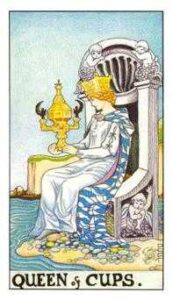
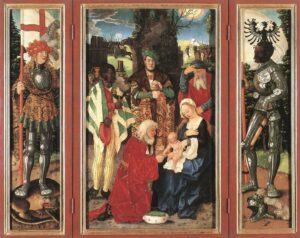
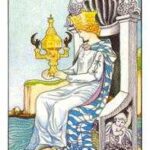
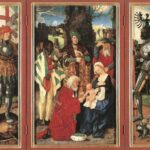
12 Responses
I loved this interview Jeannie thank you so much! And to Teresa Oster. How paradoxical are Khrishnamurti’s views on the individual and the collective and how each impacts or influences the other. By no means are they exclusive to each other. Much like the masculine and feminine energies –
I commented on my own blog post yesterday or the day before that the individual taking responsibility is a good way forward. Just another touch of synchronicity!
Good luck with your presentation! And I am much looking forward to the publication of The Soul’s Twin …
I remember Dr. Martin Odermatt – he stayed at our home many years ago when he was visiting South Africa and giving talks (he also visited the bush). He was very special. He met my sons, young at the time and a month or so later sent them Swiss chocolates! Just a little anecdote!
Oh my, Susan. All these synchronicities. Every time we communicate it feels pre-ordained by the universe.
Something similar happened to me this weekend. I was attending a weekend symposium here with Matthew Fox and Ilia Delio, both spirit people and brilliant, prolific authors. Both cited Jung several times over the weekend. On the first evening, I went to congratulate the organizer and he called to a woman he’d just been talking to, to come back and meet me. He had just told her to look for me, as we both had much in common. She is a Jungian analyst who now lives in Sarasota, Florida. When I mentioned Dr. Odermatt in conversation, it turns out she not only knew him well from the Jung Institute in Zurich, but had in fact, sat at his bed as he was dying! You just can’t make these things up.
I agree with you about Krishnamurti’s views. The principle is true whether you talk about the individual and the collective, the micro and macro aspects of the universe, an atom and a molecule, a photon and a holograph, or the masculine and the feminine. They are so intricately interconnected that each separate entity always influences the other as well as the whole organism within which they are contained.
Thank you for writing, and for your good wishes about my presentation and book. It’s an exciting time.
Love, Jeanie
Jeanie, I very much wish I could be in Florida to hear you speak. Such riches you bring us. Do you know if they will be recording it?
Thank you, Diane. I wish you could too. I don’t know if they’ll be recording it, but if they do, and if they provide access to it, I’ll be sure to let you know. Wishing you and your wonderful book continued success. I’m wondering if you’re simmering another one now. That would surely be a delicious treat to look forward to! Love, Jeanie
I’m completely with you in exploring the Divine Masculine/Divine Feminine, both within and in the outer world. While being ordained a priest was about the last thing on my to-do list, when I found an Independent Catholic church that blessed in the name of God Father/Mother, I was impelled into ordination. My husband, who was ordained an RC priest, but left the RC church, is my compliment and partner. He’s also my mentor. We are, in all pieces of our life, compliments. And we both bless in the name of the Divine Paring. It is possible, even necessary, so see God, by the many names we call that energy, as Father/Mother. I’ve written, although not yet published, a book on our journey.
Hi Janet, thanks for taking the time to comment.
Wow, yours has been quite a journey indeed. I know it took an extraordinary amount of courage for you and your husband to cross those religious institutional boundaries. Having support from each other must have emboldened and comforted both of you.
The Divine Pairing. I love that. I haven’t heard that term before.
I hope you’ll check out my new book…when it comes out…and give me your thoughts on the Couple as a new God-image and another name for the Sacred. Perhaps you, Susan, and Diane might all be willing to read and comment on a preview copy. You’re all writers about psycho-spiritual matters, and you all know what it takes to speak in your own voice and put yourself out there for everyone to shoot down! I’ll send a request when the time comes. Good look with your new book. I’ll be happy to do the same for you. 🙂
Love, Jeanie
Jeanie, I would be honored to be a reviewer for your book. I look forward to it. Thank you for asking.
And yes, we did have to cross boundaries to be together, and yes, that courage has comforted us. It’s what we use when life gets complicated (complicated being one of those euphemisms for downright nuts). Thank you also for your offer to review mine. Finding a publisher willing to gamble on a memoir that promotes God Father-Mother remains a challenge, but I trust when the message needs to be heard, it will happen. It seems as if a general calling is sounding.
As an interesting side note, Cliff was born six weeks premature in the same hour my father was dying when I was eight years old. What else could we do but find each other…. 🙂
Love back to you, Janet
Reblogged this on lampmagician.
Thank you!
Thank You dear Jean for this excellent and amazing interview ?❤❤?
Jeanie, I would love to preview a copy; count me in. I’ve been speaking to Jungian groups about the book, so no time yet to think about another. Naomi Ruth Lowinsky just wrote a beautiful review of it in Psychological Perspectives. She might be a good one to preview yours.
Thank you, Diane. Both for offering to preview a copy and for your suggestion of Naomi Ruth Lowinsky. I hope the weather in Boston is better this week! Stay warm.